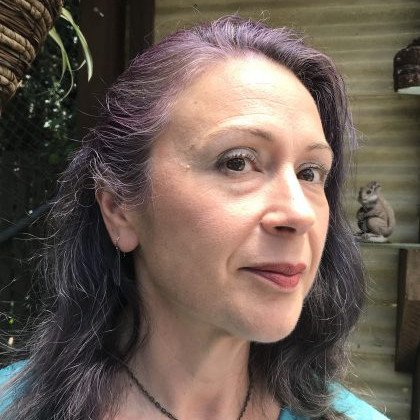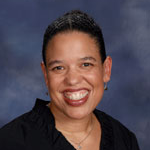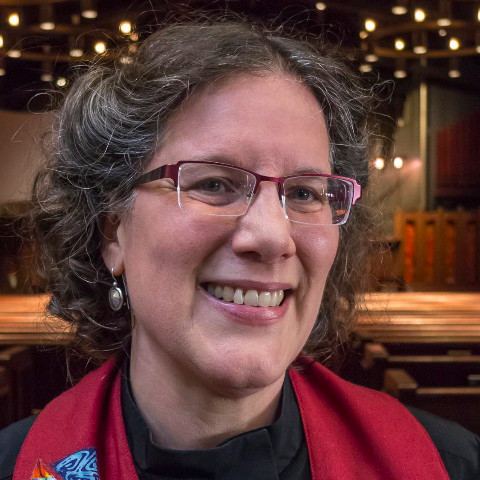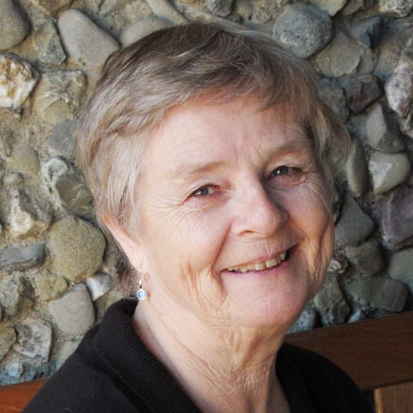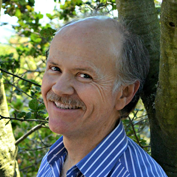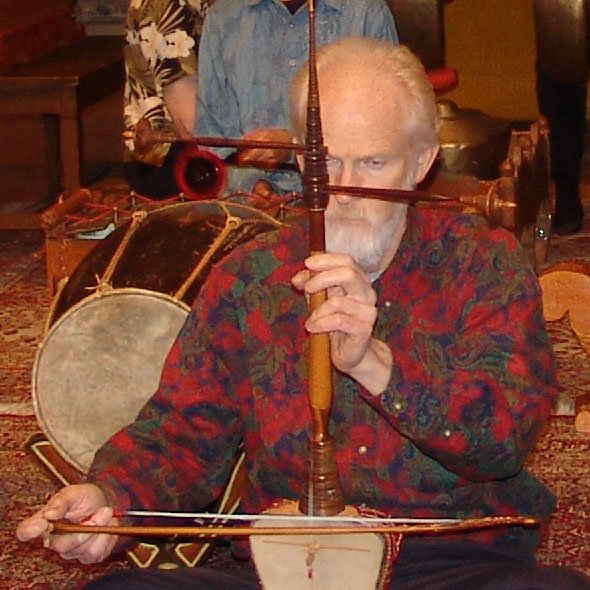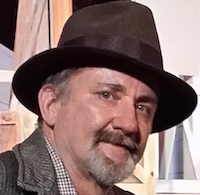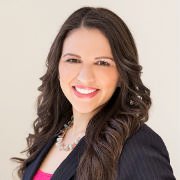Taking Care of the Church
 The Office in 1973
The Office in 1973
by Grace Ulp
Most of the equipment in the office was just about what had been down at the “old church” in 1961 when we came up the hill. A spirit duplicator with its purple copies. An ancient Remington typewriter—black, with keys that tangled up for general use, and an IBM Selectric with a type ball for the executive secretary. A big new acquisition: a mimeograph machine.
Our first computer came quite a bit later, 1981—an Osborne 1—about as big as one of the computer towers now, with a 5” display screen. When the police helicopters flew over—checking for student activists, I suppose—all the letters on the screen would fly about like a tossed salad. When the plane disappeared over the horizon, the letters would drop back into place. Mac Lingo wrote our first financial program—a big step forward. It would do everything but close for the year.
The Religious Education Library from the old church, adult books of history and inspiration were housed on shelves in the long hallway outside the offices. As the office equipment and personnel grew, the space was needed for the copier and other office material so the books were moved: the Library to the Meditation Room; books by members went to the Chrysalis Room
Rides to Church
by Jay Hanks
The rides to church started out when the #7 bus line’s route was changed and no longer would bring people to church on Sunday. I started out meeting the appropriate BART trains at the El Cerrito station, but that didn’t provide many rides, so I started finding individual rides for people, holding up a sign in the Atrium to help make ongoing connections. [Other church activities for Jay included being Head Usher for several years during the late 1960s and early 1970s.]
Archives—A Tribute to Erda Labuhn
By Betty Webster
 June 1, 2011: When I sit down to write a tribute to Erda Labuhn, I don’t know where to begin. There are so many memories of time spent with her; and becoming aware of her many activities and talents and how much UUCB has always meant to her. She first came to The First Unitarian Church of Berkeley (as it was called then) when it resided in the “Old Church,” the one at Dana and Bancroft. Every summer the church had an international program for the young people. Each year a different country was explored—its location, geography, customs, dress, music, etc. Erda brought her daughter to this program one summer and was so impressed that when fall came she and her daughter stayed on. Erda became involved in the Religious Education program, then in the choir, then with the Music Committee, then on the Board, then President of the Board, then on the Office Staff, and then working on the archives.
June 1, 2011: When I sit down to write a tribute to Erda Labuhn, I don’t know where to begin. There are so many memories of time spent with her; and becoming aware of her many activities and talents and how much UUCB has always meant to her. She first came to The First Unitarian Church of Berkeley (as it was called then) when it resided in the “Old Church,” the one at Dana and Bancroft. Every summer the church had an international program for the young people. Each year a different country was explored—its location, geography, customs, dress, music, etc. Erda brought her daughter to this program one summer and was so impressed that when fall came she and her daughter stayed on. Erda became involved in the Religious Education program, then in the choir, then with the Music Committee, then on the Board, then President of the Board, then on the Office Staff, and then working on the archives.
Our paths first crossed when I was hired in 1992 as the “Weekend Secretary.” My job was to type the Order of the Service, run it on the copier, collate and get it ready for the Sunday Service. I was also the copier of the monthly newsletter—all 950 copies on 11 x 15 paper—copy and collate. Erda (and Grace Ulp) showed me all the little secrets that made these jobs easier and possible to complete in my eight-hour “work week.” I believe Erda was also involved with the Membership Committee, because she showed me in great detail the various stages of membership for those who seemed to be drifting away leading to the final dropping of someone’s name.
Somehow I found myself beginning to help Erda organize the many papers and photographs that the church wanted to keep for its memories. Erda was particularly interested in the photographs. She knew how to catalog them properly so they could be located in a minute even years later. She knew stories about many of the people who had been part of the church in years past.
And so it began—several years of hours spent in various closets around the church going through boxes of unsorted papers, thinking how to organize them, filing them away in drawers. I can remember her saying, “You know, this is only the first time through. We will have to look at it all again and think about whether the organization makes sense, create new subject headings, new files, etc.” At first I was her “gopher.” Gradually she gave me more and more decision responsibility and projects of my own. We filed all the board minutes since the beginning of the church in 1891. Patrick Cullinane built shelves in one of the closets to store the minutes and, through his planning ahead, we still have room on the shelves to keep adding more. We organized all the books we found. We decided because of space restrictions we could only keep the books and papers written by members of the church. Others had to be ousted. Some books Erda recognized as valuable. She had a friend who was a dealer in antique books. She sold some and gave the money to the church. Some papers and books had to be discreetly thrown away.
We became interested in archiving practices and went to some seminars. We contacted the archivist at the Pacific School of Religion in Berkeley who spent considerable time showing us how to organize and store so that papers would be preserved. She also helped us develop archive practices for the church, and these were later presented to the Board of Trustees for approval. Willa Baum, a famous oral history librarian at the Bancroft Library, came to the church to give us some pointers and see how we were progressing. She was quite impressed and said just to keep doing more of the same. She also told us not to fret too much about the fire sprinklers in one of the closets going off and drowning our papers—wet papers can be restored, burned ones are gone forever.
Erda, her husband Dick, and their daughter Fern were creative artists. Erda designed beautiful fliers for some of the early musicals at the church. Erda and Dick designed and made beautiful and sometimes amusing Christmas cards every year. Dick made our member name tags for many years. He also did some oral history videos of members, and he and Mary Pugh did videos of the Sunday Service for members and for Channel 8 for many years. Fern did the calligraphy in the large album preserved under the glass in the Usher Table which listed people making substantial gifts to the church.
Erda is one of those people who changed my life through her perspective of history and of people. I learned to appreciate the past, to laugh at the amusing things that happened, to feel sad sometimes, to learn from our history, and to be tolerant of all kinds of people. I would not have missed those quiet hours, three or four at a time almost every week for many years—sometimes talking, often working in our own corner or closet. It became harder and harder for her to manage the stairs to the Peace Library—later called the Chrysalis Room. Often she just didn’t feel like coming. But occasionally we would have another picture-cataloging session. Then Dick would come to help her down the stairs and take her home.
Volunteers
by Grace Ulp
Back in the days when the staff was smaller and the technology was simpler, it was decided that if a person phoned the church, for whatever reason, a real human being should greet them and answer questions or direct their call to the right person. Churches should be full of friendly people, not answering machines. Gradually we built up a crew of phone answerers—come one morning or afternoon and help out. Some came oftener, some would help out when someone else couldn’t come.
Before we bought a folding machine, folding the mimeographed orders of service was a weekly chore. The first folding machine had rollers that were memorably lumpy from mimeo ink and turned out many a “squeejawed” order of service—“Did you use the washing machine rollers on this?” Better times, better folders.
Another area for volunteers was the preparation of the news bulletin for mailing. Stick mailing labels on them, bundle them up into zip codes, bundle the zip codes into sacks that the Post Office would accept from the person who drove them down to the Postal Center on 6th Street in Berkeley. This was a regular crew that came every two weeks.
It was important to the volunteers to be appreciated, and the staff really loved them. Valentine’s Day tea party, Alleluias at the Annual Meeting. Early in this process the bulletin crew was a man and wife by themselves (hence the memorial bench) and she was also a whiz at making candied grapefruit peel that she shared. Blessings on their generous heads!
 UUCB Buildings and Grounds
UUCB Buildings and Grounds
by Bob Sayre
My first involvement with Buildings and Grounds was in 1972. That year Richard Boeke became minister at the First Unitarian Church of Berkeley. Frank and Martha Randall lived in the cottage, and they both took care of the custodial duties around the church. Frank was also director of Religious Education. Dick Boeke saw that various maintenance and upkeep needs were not being accomplished, so he came up with the idea of starting a once-a-month Saturday morning men’s breakfast and work party. Ladd Griffith cooked wonderful breakfasts; and it wasn’t long until a group of about twenty men, including me, showed up on a regular basis. Repairs were made, parking lots cleaned, Scotch broom pulled, and the patio doubled in size.
After a few years the Randalls retired and moved away. The Church had a series of Starr King students who lived in the cottage and did the custodial duties for the church. The work party evolved into a group for everyone, and we soon had more women participating than men. Through the years, the work party changed and became smaller as younger members’ work schedules became more demanding and older members dropped out.
Spring grass cutting on the church grounds was always a big job and a big problem to accomplish. The grounds comprise seven or eight acres, much of which was covered with scrub trees, Scotch broom, and blackberry thickets. The open land grew up to wild oats and was a fire hazard once the grass dried. In the early days, I have heard that two men from the El Cerrito Fire Department were hired in their off hours to do a controlled burn of the grass, but I have never seen this done. An all-day beer and pie work party was an annual spring event to get the grass cut with weed whips—an endless task. The property is so steep and rough that any type of mowing machine would not work.
I came along about the time gasoline-powered weed eaters came on the market. I found that cutting the grass in the evening after work was relaxing and gave me a visible sense of accomplishment that I didn’t always find at my work. I cut the grass for several years. I didn’t usually get over the entire property in any one year, but it was enough to keep the Fire Department happy. Dick liked to walk the grounds and also walked across the hill to his house. In the process, he spotted poison oak, so he carried a squirt bottle of weed killer and pretty much eliminated all the poison oak. Pulling Scotch broom was another of his activities. Dick would say, “the Scotch broom is infinite.”
The hill above the parking lot was once almost covered with broom on the north end and wild anise on the south end, so that it was barely passable. Also the lower hillside below the fire road had a large blackberry patch and an impenetrable jungle of acacia, eucalyptus, and pine trees. Eventually we were able to hire someone to clear this area. As time has gone along, we have hired various people to cut the grass and clear the brush with varying degrees of success. Tom Mugglestone was instrumental in getting much of the brush cleared. In the last few years Don Wollwage and his crew have taken over the ground maintenance and are doing a great job.



